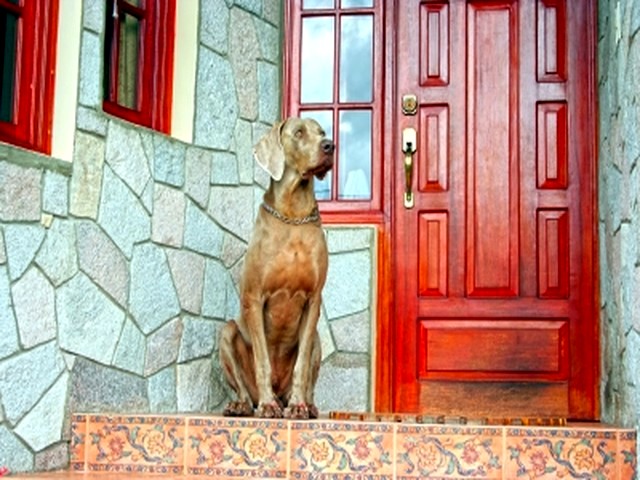How to choose your watchdog: territorial aggression

Social animals like the dog, very markedly defend their territory against the presence of any stranger. Like other wild
canines, react aggressively to those unknown individuals, people or animals coming into the area considered by them as
their territory.
The most common form of aggression in the canine world is territorial, often even sought and desired by owners who often
encourage and reward this behavior. Moreover, only occasionally this type of aggression is seen by the owner as a
difficult problem to control and often to eradicate or at least reduce its intensity.
The development of the territorial defense behavior is very characteristic and can be divided into two distinct phases:
1st Stage or notice:
In the first phase the dog will avoid the attack and basically concentrate on stranger intimidate. Usually the dog
reacts barking and keeping some distance before the approach of an unknown individual in the vicinity of its territory.
As the intruder getting closer to the central domain or dog becomes more aggressive reporting, such as growling,
bristling of the hair on the back, lifting the lips connotations...
Sometimes this behavior is reinforced by the fact that the intruder is clearly threatened and decides to flee. On many
other occasions, the reward is unknown because no thought into alien territory, just walking in there and obviously
passes by. This further reinforces the aggressive behavior of the dog, believing the architect of the "flight" of the
unknown.
Phase 2 or attack:
In some cases, if the distance exceeds invasive and too close to the dog or the central area of the territory, it can
reach the attack, which may occasionally violent.
It still exists some correlation between the two phases, it is noteworthy that some dogs can go directly to the second
stage barely have warned about its intentions. These individuals can become very dangerous, not only for physical damage
that may result, but for all civil and criminal liabilities that will be involved inevitably their owners.
General control measures

The presentation of aggressive behavior to defend territory in most cases only occurs if the dog is on the inside. It is very typical territorial defense of the home and, by extension, of the car. This explains why many dogs show a somewhat aggressive and powerful barking behavior when they are inside a vehicle and someone approaches the same.
The basic control measures should focus on:
Identification of the territorial aggression without confusing it with other forms of aggression. If detection is not
correct, measures to neither control it nor will.
Getting a good education or basic obedience does not avoid the problem, but it allows the owner to control the dog in a
critical situation. In many situations obedience will help us to exert more control. It should be noted that, as a
general rule, dogs that are tied or locked during the visits of others, tend to further increase aggressive behavior.
Choosing a watchdog

As stated above, defense and guard a territory is an intrinsic behavior of dogs, precisely because they are social animals must protect what they feel is theirs. Anyway, there are some key factors that determine the ability of a dog to be a better guardian:
